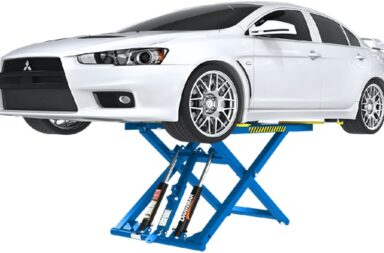The safety and wellbeing of your employees is a top priority for any business, but if you are managing a fleet of vehicles where drivers are on the road daily this focus has to be paramount.
Driving a vehicle for work comes with a set of risks that can cause damage to the vehicle, human injury, or even worse, fatalities.
It is essential that drivers are kept as safe as possible while driving for work. To keep drivers safe, you need to deliver continual driver training, keep vehicles well-maintained and use telematics and fleet technology to help monitor driver behaviour.
In this article, we look at the different ways you can improve fleet driver safety.
How to improve fleet driver safety
Improving fleet driver safety does not only reduce accidents, but it can also reduce your fleet insurance costs. Putting proactive measures in place to reduce accidents will help reduce maintenance and repair costs and your fleet insurance policy costs.
Here are some ways in which to reduce accidents and costs by improving fleet driver safety.
- Remove any distractions
Accidents can happen if drivers are easily distracted. Distractions include things like using mobile phones, eating, and visual impairments caused by objects in front of the windscreen (such as an air freshener).
Most distractions are illegal. For example, it is against the law to:
- use your phone while driving
- eat while driving
- have something obstructing your view of the road while driving
If any of your drivers are caught doing any of the above, they risk receiving a fine and points on their licence. Keep your driver’s fleet safety policy up to date and provide advice on when it is safe to use your phone for messaging, phone calls or changing the music so that your drivers know what is expected of them when driving a company vehicle.
- Use telematics and fleet technology
Telematics and fleet technology can monitor driver behaviour by collecting data from vehicles. Telematics measure different metrics such as speed, braking distance, the route drivers have taken and acceleration.
You can then turn this data into actionable insights to improve driver behaviour and keep your drivers and other road users safe.
- Training
Provide regular training sessions for your drivers so they are aware how to drive safely and understand what could happen if they were to execute poor driving behaviour.
Driving training can cover:
- How to drive in challenging weather conditions
- Driving with different loads
- Obstacles to look out for when driving
- When to safely overtake other vehicles
- How to keep to the speed limit
Driver training should help make your drivers accountable for their actions and teach them how to keep safe on the roads.
- Motivation with incentives
Motive your drivers to drive better by running incentives and awarding those who drive well. Incentives will help to improve driver performance and make drivers want to perform better on the roads.
- Alert drivers to poor driving
Fleet management technology will automatically alert drivers of poor driving behaviour, such as harsh braking or accelerating. These alerts can help managers keep track of poor driving habits so they can provide training for those who need it whilst rewarding other’s good behaviour.
- Have a health and safety policy
The most important element to having a health and safety policy is getting buy-in from senior management and other employees. All policies should be written down and communicated to employees.
You should outline the company’s commitment to reducing road traffic accidents to keep drivers safe. This commitment can be cemented with a signature from both managers and employees, and policies should be reviewed regularly to ensure that all information and advice is kept up to date.
- Maintain vehicles
You should regularly schedule vehicle maintenance checks to ensure all vehicles are in good condition. Drivers need to regularly check tyre pressure and oil levels before setting off on another journey and this should form part of their daily routine.
As a fleet manager you should also book your vehicles in for regular services to replace the oil filter and check the overall health of your vehicles.
- Run background checks on all drivers
Thorough checks should be carried out on all drivers you employ to ensure they have a clean driving licence with no penalties or points on their licence. You can run a Motor Vehicle report to check your drivers before they are employed and get behind the wheel.
The importance of safe driving
Safe driving is vital to your business as operators of fleets. Not only does it prevent accidents that can be expensive to repair and impact your fleet vehicle insurance, but it can also mean your drivers or members of the public become injured. Putting measures in the place to improve fleet driver safety will save money and protect the health of your drivers and others.


